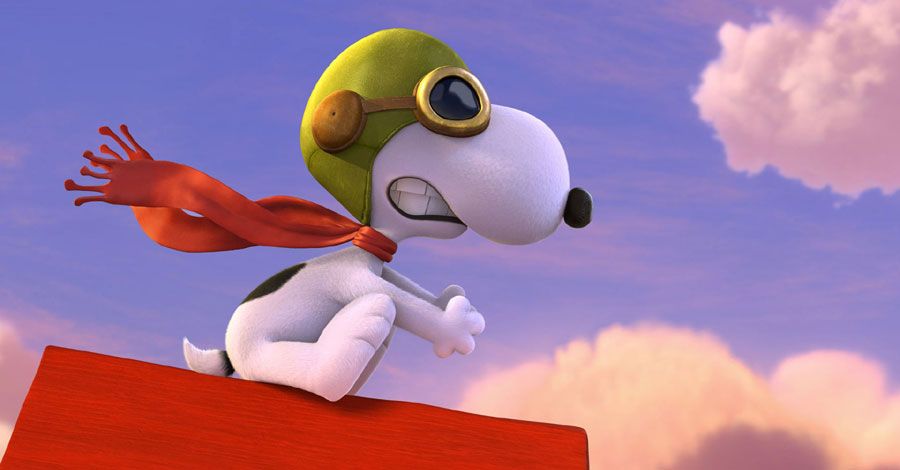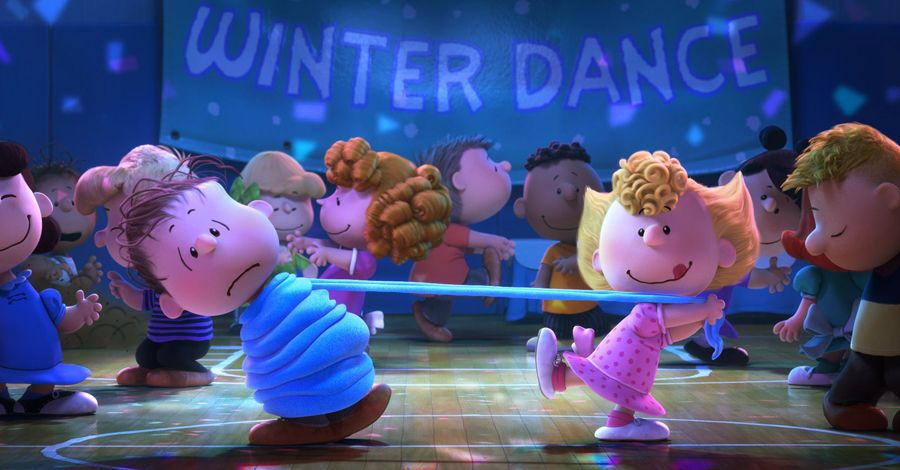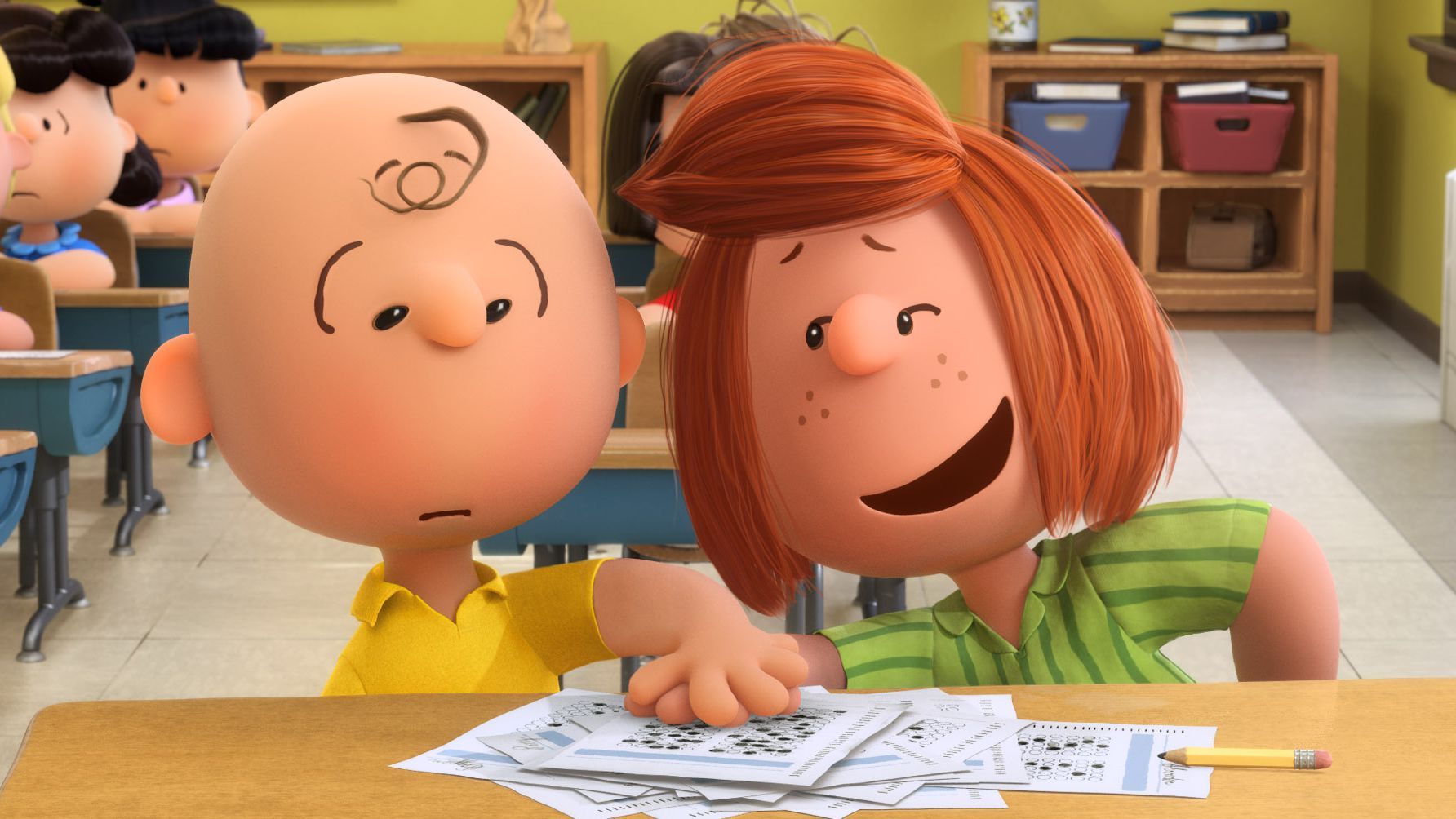Steve Martino, who’s directed such animated hits as "Ice Age: Continental Drift" and "Horton Hears a Who," recalled a moment that proved crucial to launching what promised to be Blue Sky Studios’ most creatively challenging project: "The Peanuts Movie."
It was the day Craig Schulz, son of legendary “Peanuts” creator Charles M. Schulz, stood before nearly 400 studio employs working on the film. "Craig said, 'My father's friends and people who collaborated with him referred to him as "Sparky." That's his nickname and that's how they referred to him. I want you, as we're working on this film, to call my dad "Sparky,"' Martino remembered at an early footage presentation on the 20th Century Fox lot. "And to me that was a real powerful moment: him opening his arms and welcoming us in to collaborate together.”
It was an important step in the making of not only the first major "Peanuts" movie in about 30 years, but the first project to translate Schulz's world into the popular 3D computer-generated animation format. And given the longtime love affair the public has enjoyed with "Peanuts" – for example, the iconic holiday special "A Charlie Brown Christmas" marks its 50th annual broadcast this year – the prospect of capturing exactly what Schulz's special magic means to multiple generations was fraught with risk.
"The response between family, friends and neighbors was always the same," Martino said. "First, it was 'Oh, "Peanuts" – I love "Peanuts!"' And they would all share a story – something about Snoopy or the comic strip or the TV specials, and there was this great enthusiasm, great excitement. And then it always ended with the same kind of response: 'That's great, I can’t wait to see a new movie with the Peanuts characters – Don’t screw it up!'"
Key to capturing the cartoonist's unique sensibility was the contribution of Schulz's heirs. Although the family had decided that no one else would ever write or draw the "Peanuts" comic strip, they remain interested in keeping Schulz's creations fresh and viable in other media, as the characters have continued to thrive as licensed properties. After his involvement as a writer on the 2011 TV special "Happiness Is a Warm Blanket, Charlie Brown," Craig Schulz was interested in translating his father's material to the big screen, teaming with his own son, filmmaker Brian Schulz and Brian's writing partner Cornelius Uliano, to craft a story and screenplay that they felt captured the essence of the characters and their often anxiety-ridden, frequent philosophical worldview, which led to a partnership with Blue Sky Studios, hot off their successes with "Ice Age" and "Rio" franchises.
"Three years ago or so, Craig and I had this 'power lunch,' very Hollywood-style, in the Warm Puppy [coffee shop] right next to the skating rink in Santa Rosa [California], where the Schulz Museum is, and where Craig's dad had lunch every day," Martino said. "We were in the Birthday Room, with comic books of Snoopy and balloons and so forth, and that's where we first started talking about this film in particular."
"Our very first goal from day one was: Honor his work," Craig Schulz said. "Going to the comic strip, and bringing back everything the fans want to see, plus introducing it to a new generation. That was important: bringing the new kids on, getting them to read the comic strip, understanding what this was all about."
Review: "The Peanuts Movie" Is Sweet, But Good Grief Is it Dull
Of course, for the filmmakers, their fondness for the property had deep roots in their own childhoods. "I was actually honored to be able to work with these characters," Martino said. "I love 'Peanuts.' I'm a fan. I was seven years old when the Christmas special came on, and it was a big part of my life. I grew up in the Midwest, and I felt like those characters and that life were reflective of the life I was living. So I'm a fan, first and foremost."
So was Paul Feig, the writer-director behind comedy hits like "Bridesmaids," "The Heat" and "Spy," as well as the forthcoming female-driven "Ghostbusters" reboot, who signed on as producer. "I really grew up on 'Peanuts,'" he said. "It was my favorite thing. As a kid, I couldn’t go to bed without reading one of the “Peanuts” books. I had all these paperbacks and I watched the cartoons all the time. So it’s a real special part of my life.
"I think it’s just so human," Feig continued. "It’s not this idealized version of childhood, but it’s a fun version of it. It has realistic expectations and realistic pressures, but then you have Snoopy who provides the escapism of, we all want to be Snoopy. We all want to be able to live inside our own fantasy world. So I think it’s just a great mix and the legacy of the show has left is just unbelievable. 65 years later, it’s this strong. It’s great."
Schulz's widow Jean was able to open up the contents of the family Santa Rosa museum to the filmmakers, allowing them a deep-dive into the creator's body of work – including digital access to every "Peanuts" strip as well as unpublished works. "We just love talking about the depth behind the comic strips,” she said. "We talked about how Sparky could sustain a creation all by himself for 50 years, which is pretty amazing in itself, and then we talk about the examples that we have that we're able to show people. So for people like Steve, we can take them back into some of the archives…We think that not only are the comic strip characters lovable, but it helps to understand where they came from."
For Martino, the first and greatest challenge was how to visually adapt Schulz's distinctive cartooning style into CG-rendered characters. "Our paintbrush and canvas at Blue Sky Studios is we work in computer animation, and it's not lost on me that these are wonderful pen-and-ink drawings that were in the comic strips, and that was the work we wanted to hold up," he said. "My mantra to the team working on the film was 'I want to find the pen line in everything that we do."
"He was a master of the format that he worked within" he continued. "And as I thought about the history of 'Peanuts,' the Christmas special was, to me, a little bigger format. We saw movement, we saw Bill Melendez and Lee Mendelson, in their work collaborating with Sparky, create an experience that was a little bigger. Well, we're creating a movie in 2015 for the movie theater, for the big screen, and to me the next thing that was really important is we're painting on a bigger canvas, and I want us to take advantage of it, to create an experience for an audience today felt rich, felt big, felt worthy of the big screen, and the characters felt exactly the same as we've always know them."
The expansive new format also allowed Martino to scratch a long-simmering creative itch. "When I was a kid I would look at the comic strip and I always wanted to look around the corner and see a little more of what that world was,' he said. "I wanted us to take an audience into Charlie Brown's world, into Snoopy's imagination, and have it feel like it was a place that existed, where these characters came to life."
To achieve that effect, the Blue Sky team embarked on what Martino called "comic strip archeology," scouring the source material to create what they saw as the ultimate visual versions of the "Peanuts" gang, borrowing elements of what they deemed the finest Schulz renderings of every character and incorporating the best of the best into the final designs.
"Sparky was the production designer on this movie, and any time a designer had a question I'd say 'Go to the strip,'" Martino said. References for everything from Snoopy's doghouse to Charlie Brown's living room were culled from the comics, and the team even used architectural references from neighborhoods in St. Paul Minnesota, where the cartoonist came of age. Then the designs were worked and re-worked until they included the rumply imperfections that flowed from Schulz's pen. "Computers love to make things symmetrical, and the biggest challenge we had was to beat the symmetry out of that computer. It was about bending and manipulating these models…to make it feel like it was hand-drawn."
"Blue Sky hit a home run in creating the look, the feel," Craig Schulz said. "And it probably never would have happened if we didn’t have Steve as the director. I think any number of people could have messed this film up. Steve came in, he pushed the team as hard as he could to make them do it right, and then critiqued it and critiqued it to no end, and really made it absolutely true to my dad’s pen line."
Sound became a crucial factor in Martino's vision as well: He wanted the character voices to hew as closely to the very first animated incarnations that are so well-remembered today. "The voices of Charlie Brown, Lucy, Linus in the Christmas special, the Halloween special – those were the characters that imprinted on my mind," said the filmmaker. "And as there were other specials made, clearly those kids grew up and there were other voices, in my mind it was 'That's not quite Charlie Brown.' At least for me, because the Christmas special and the Halloween special were so important to me."
"When we cast the movie, that was one of the areas I was most worried about, because if those voices don't sound right, if I were a fan I would get bumped right out of the movie," he added. "We listened to thousands of audition tapes, and we found a Linus with that wonderful little lisp, and it's natural – and that was one of the most important things to me: I wanted the kids to come in and just express themselves in moments and not have to be putting on a lisp or be acting. Just purity."
The film was also able to utilize the original voices of Snoopy and Woodstock even though Melendez, the producer of dozens of "Peanuts" TV specials since the debut in 1965, died in 2008. Sound-engineering magic allowed his distinctive tones to be revived for both characters.
And the famous "wah-wah" of the talking adults from the TV specials was revived as well: The acclaimed jazz and hip-hop trombonist Trombone Shorty provided the indecipherable adult patter. "I’m very honored that they called and even thought of me to be a part of it," the musician revealed. "I remember when I was growing up, my mom was saying things to me, and I would have to try to repeat that. She’d always say, make it talk, and I would do that. So when I got this gig, it was natural for me. A little difficult at the beginning because it’s not actually music – it's just sound effects, so my ear wanted to correct it. Other than that, it was great!"
In the end, the creative journey proved surprisingly revealing for Martino, despite his life-long admiration for the source material. "What I've learned now as an adult re-reading the strips, certainly as carefully as we have in this movie, I look at the body of work and I think what Sparky did was he connected to the human experience," he said. "He connected to those thoughts that we often have in our head but are afraid to actually express. 'Do people like me?' 'Will I be successful?' 'What will happen if I try and it doesn't work out?'...He found the core of those ideas, and then he had us laugh at them."
"What I love in the theme of this film is we take the simple and we make it feel enormous, emotionally and with humor in Charlie Brown," he added, noting that the film didn't need to lean on huge stakes, larger-than-life antagonists or lavishly animated pyrotechnic action to make audiences invested. "And at the end of the day what we actually show Charlie Brown as he's always has been: he's not the guy who wins the great award or saves the planet. We looked at looked at the 50 years of the comic strip and said 'Let's hold up the qualities that Charlie Brown has had, and let's celebrate that.'"
And Jean Schulz believes that’s exactly what Sparky would have wanted. "He said, 'I’m a little bit of all the characters, but Charlie Brown is mostly me,'" she remembered. "He said, 'He’s the sort of kid I would have liked to have had as a friend.' And I think when you love your character, that’s why he put what he did into Charlie Brown: because he loved him."
“The Peanuts Movie” opens today nationwide.




